How it Began
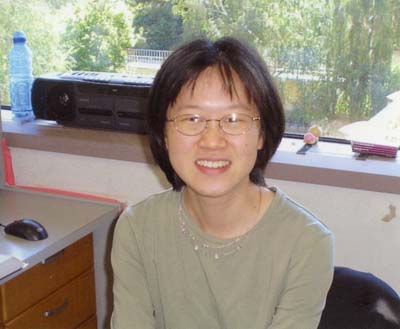 My symptoms began in the summer of 2007, just months after we'd gotten married. I'd worked for a year as a postdoctoral researcher in the Department of Developmental Biology at Stanford, after 7 years working for my Ph.D. in Biology at the University of California, San Diego. I thought my symptoms were manifestations of stress from adjusting to a new stage of life.
My symptoms began in the summer of 2007, just months after we'd gotten married. I'd worked for a year as a postdoctoral researcher in the Department of Developmental Biology at Stanford, after 7 years working for my Ph.D. in Biology at the University of California, San Diego. I thought my symptoms were manifestations of stress from adjusting to a new stage of life.
 The first symptom was strange headaches. Followed by pain in the teeth, hearing loss and numbness—all on the right side. After months of misdiagnoses, an MRI revealed a tumor the size of an egg in my head. The bulging mass abutted my right jaw bone. It sat beneath the skull, pushing against my throat and sinuses.
The first symptom was strange headaches. Followed by pain in the teeth, hearing loss and numbness—all on the right side. After months of misdiagnoses, an MRI revealed a tumor the size of an egg in my head. The bulging mass abutted my right jaw bone. It sat beneath the skull, pushing against my throat and sinuses.
 I was diagnosed with Stage III synovial sarcoma, a rare and highly aggressive cancer. I willingly submitted to a year of debilitating surgery, radiation and chemotherapy. Radiation scorched my mouth. I needed painkillers just to drink water. Chemotherapy damaged my immune system, putting me at risk of death by infection.
I was diagnosed with Stage III synovial sarcoma, a rare and highly aggressive cancer. I willingly submitted to a year of debilitating surgery, radiation and chemotherapy. Radiation scorched my mouth. I needed painkillers just to drink water. Chemotherapy damaged my immune system, putting me at risk of death by infection.
At the end of that torment, my oncologist congratulated me on clear scans, encouraging me to return to “normal life.” But when I asked for survival odds, she provided no concrete numbers.
Examining Alternative Therapies
Because of my job, I had access to medical and scientific papers. I discovered I faced a high risk of recurrence. No effective treatments existed, should my cancer return. One study indicated 100 percent of patients in my situation would die from their cancer.
 It was then, in 2009, that we knew we had to do something more to eradicate my cancer before it returned. As conventional medicine had nothing to offer, Eddy and I turned to complementary and alternative medicine (CAM).
It was then, in 2009, that we knew we had to do something more to eradicate my cancer before it returned. As conventional medicine had nothing to offer, Eddy and I turned to complementary and alternative medicine (CAM).
In desperation, we spent thousands on books, vitamins and exotic supplements. I followed an intensive vegetable juice diet (the Gerson Diet). I consulted alternative doctors and naturopaths and dietitians. For weeks, we drove two hours each way to receive infusions of Vitamin C. I tried acupuncture and all sorts of natural compounds that strengthen the body’s innate defenses.
Discovering Immunotherapy
While researching the science behind these alternatives, we identified a recurring theme: strengthening the immune system. We learned of spontaneous disappearances of cancer, and how some scientists attributed them to the immune system. These clues led us to the remarkable cases of patients cured with Coley's Toxins.
Elated, we brought this information on Coley's Toxins to my oncologist. But she gently dismissed it as belonging to the realm of “alternative” medicine. Still, we believed it was a mistake to ignore the historical anecdotes, and that science could explain the miraculous healings.
Pursuing Immunotherapy
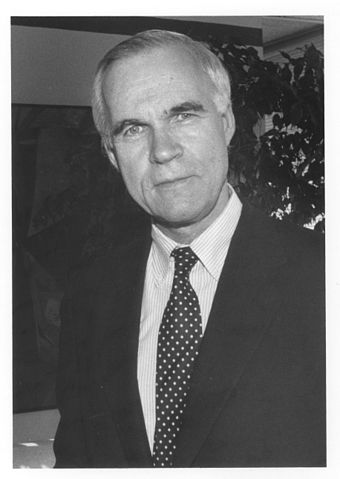 In the midst of our research, my professor at Stanford connected us with Lloyd Old, M.D., a leading cancer scientist at Memorial Sloan Kettering Cancer Center (MSKCC). Considered by many to be the “Father of Modern Tumor Immunology,” Dr. Old affirmed our thinking about Coley’s Toxins and the power of the immune system to destroy cancer.
In the midst of our research, my professor at Stanford connected us with Lloyd Old, M.D., a leading cancer scientist at Memorial Sloan Kettering Cancer Center (MSKCC). Considered by many to be the “Father of Modern Tumor Immunology,” Dr. Old affirmed our thinking about Coley’s Toxins and the power of the immune system to destroy cancer.
Guided by Dr. Old, we embarked on a quest to destroy the invisible cancer in my body. Using a vaccine, he first trained my immune cells to target my cancer.
Then, to weaken the cancer’s defenses, he wanted me to receive Yervoy, a powerful immunotherapy being tested in clinical trials. I didn’t qualify for trials, but all was not lost—Dr. Old thought Coley’s Toxins might achieve the same results.
Even though American doctors had used Coley's Toxins 100 years earlier, there was no way to get it in the U.S. It hadn't gone through clinical trials for FDA approval.
Given my high risk of death, Eddy and I traveled to Tijuana, Mexico to get it.
(Photo of Dr. Lloyd Old, 1995: By Cancer Research Institute (Own work) [CC BY-SA 3.0], via Wikimedia Commons)
Doubling-Down on Immunotherapy
Despite having received a short course of Coley's Toxins in Mexico, in 2011, my cancer returned in my head. My doctors recommended surgery, but this time, we didn’t rush into treatment.
We consulted two oncologists and three surgeons. They confirmed our research, saying the chances of a cure with surgery and chemo were "low." One of them—a top surgeon at MSKCC—insisted the odds were zero.
"There are thousands of microscopic tumors in your head, waiting to grow," he said.
And then the cancer spread to my lungs. I was now battling metastatic Stage IV synovial sarcoma—an incurable disease that threatened to riddle my body with tumors.
Devastated, but remaining objective, we believed the evidence still showed an immune-based cure was possible. We doubled down on immunotherapy and battled my cancer for another 3 years. It would take absolute resolve.
An Arduous Journey
It wasn't that long ago when this happened in 2011. Immunotherapy was still considered highly experimental. We faced opposition from doctors who thought we were dabbling in quackery. Some of them told me immunotherapy was useless.
We had to go through great lengths to obtain treatment. There was a dearth of immunotherapy clinical trials. Modern immunotherapies like PD-1 and Yervoy were not yet approved.
Undaunted, we devised our own strategies to activate various aspects of my immune system, guided by Dr. Old.
 We had a doctor insert 4 specialized needles straight through my face to freeze my jaw tumor. Likewise for 3 tumors in separate areas of my lungs. The freezing killed the tumors while sensitizing my immune system to proteins in my cancer, acting as a broad vaccine.
We had a doctor insert 4 specialized needles straight through my face to freeze my jaw tumor. Likewise for 3 tumors in separate areas of my lungs. The freezing killed the tumors while sensitizing my immune system to proteins in my cancer, acting as a broad vaccine.
To complement the freezing of tumors, we flew 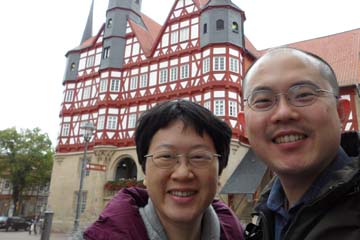 to Germany every six weeks, where I received injections of immune cells. (Dendritic vaccines and Natural Killer cell infusions.)
to Germany every six weeks, where I received injections of immune cells. (Dendritic vaccines and Natural Killer cell infusions.)
We legally i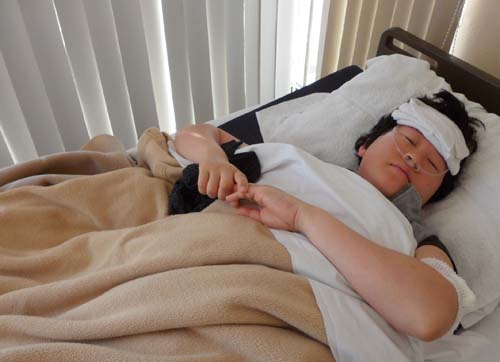 mported Coley’s Toxins into the U.S., but no doctor would administer it, so, Eddy had to. For over 2 years, I received over 200 infusions of Coley's Toxins, causing chills and fevers reaching 104°F. I also received injections into my jaw area, causing transient swelling and pain. We lugged heavy bags of medical equipment all around the world, performing infusions and injections wherever my treatment took us—San Francisco, Detroit, Houston, New York and Germany—in hotels, motels and in my bedroom at home.
mported Coley’s Toxins into the U.S., but no doctor would administer it, so, Eddy had to. For over 2 years, I received over 200 infusions of Coley's Toxins, causing chills and fevers reaching 104°F. I also received injections into my jaw area, causing transient swelling and pain. We lugged heavy bags of medical equipment all around the world, performing infusions and injections wherever my treatment took us—San Francisco, Detroit, Houston, New York and Germany—in hotels, motels and in my bedroom at home.
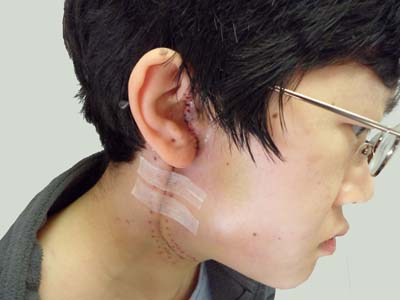 When my head tumor recurred again, I made the heart-wrenching decision to amputate my jaw. A post-surgery analysis showed T cells had besieged my tumor and killed parts of it. These signified my immune system had learned to target my cancer!
When my head tumor recurred again, I made the heart-wrenching decision to amputate my jaw. A post-surgery analysis showed T cells had besieged my tumor and killed parts of it. These signified my immune system had learned to target my cancer!
Finally, I employed a science-based dietary strategy to make my tumors susceptible to immune attack: I eliminated omega-6 oils (corn oil) from my diet and took large amounts (24g) of omega-3 fish oils daily for over a year.
Working with a Harvard oncologist and researcher, I also followed a short course of the ketogenic diet. His research showed the diet could strip tumors of immune cells that protect and enable tumors.
The Outcome
I'm alive and "cancer-free" 8 years post-diagnosis—5 years after my disease had recurred and metastasized. For 3 years, my scans have stayed silent. For a high-grade sarcoma that was twice-recurrent, metastatic and accelerating, that silence speaks volumes. We believe immunotherapy has kept me alive against all odds.
 Meanwhile, a leading immuno-oncologist at the MD Anderson Cancer Center has validated our immunotherapy-centric approach. With his support, I no longer face opposition from doctors.
Meanwhile, a leading immuno-oncologist at the MD Anderson Cancer Center has validated our immunotherapy-centric approach. With his support, I no longer face opposition from doctors.
Only time will tell if I'll reach the 20-to-30-years survival that many of Dr. Coley's patients attained. But that doesn't change the fact that immunotherapy remains the best evidence-based hope of survival—for me and for patients with advanced cancer.
In our book, we explain the science behind the multi-pronged strategy we employed to mobilize various aspects of my immune system against cancer. We share stories on how we obtained these therapies, and how patients can obtain them. We discuss challenges we overcame, pitfalls to watch for, and misconceptions about immunotherapy.
Patients interested in using immunotherapy today will be glad to know that it's become much easier to obtain since 2014.
We hope our story will encourage and inform you how to maximize the benefits of immunotherapy—to survive even a dismal prognosis.
Summer 2016
